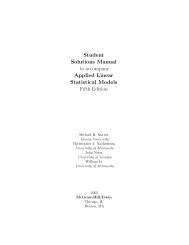Journal of Film Preservation - FIAF
Journal of Film Preservation - FIAF
Journal of Film Preservation - FIAF
Create successful ePaper yourself
Turn your PDF publications into a flip-book with our unique Google optimized e-Paper software.
qualité exceptionnelle, soulève<br />
beaucoup de questions par rapport à<br />
l’usage des archives en cet époque du<br />
numérique. Ce n’est pas leur moindre<br />
intérêt.<br />
El «city film», casi un género, todavía<br />
tiene un futuro prometedor ante<br />
sí, según el texto que el cineasta<br />
Don McWilliams consagra a cuatro<br />
películas recientes que proclaman<br />
su pertenencia a esta categoría. Pero<br />
si Berlín, sinfonía de una gran ciudad<br />
(1927) de Ruttman, que es considerada,<br />
convencionalmente, como la primera<br />
película del género, retrata una ciudad<br />
tal como era en el momento del rodaje,<br />
las películas que aquí se presentan<br />
evocan hoy una ciudad cual había sido<br />
en otros tiempos.<br />
El autor, que recurre a menudo a los<br />
archivos en sus películas, examina<br />
las obras en cuestión con una mirada<br />
interesada y, a la vez, crítica, definiendo<br />
el desafío que enfrenta el cineasta<br />
como una forma de ir más allá de la<br />
superficie de las cosas para descubrir la<br />
realidad que se oculta bajo imágenes<br />
de otra época.<br />
Las tres primeras películas comentadas<br />
por McWilliams recurren al cine como<br />
historia, y no, como sucede a menudo<br />
en televisión, para ilustrar la historia.<br />
Es más, las tres películas, exploraciones<br />
eminentemente personales de la<br />
historia, han sido realizadas por<br />
cineastas sensibles y de talento.<br />
La Mémoire des anges (Luc Bourdon,<br />
2008) está construida a partir de 120<br />
películas producidas por el Office<br />
national du film de Canadá en los años<br />
50 y 60 y de materiales de archivo.<br />
Montadas con habilidad, alternando<br />
de manera casi imperceptible el blanco<br />
y negro y el color, sin comentario, y<br />
manteniendo la banda sonora original,<br />
estas películas constituyen la narración<br />
de 20 años de la vida de Montréal.<br />
La música, en especial las canciones,<br />
es un elemento determinante en<br />
la construcción de la película y el<br />
cineasta llega a afirmar que se había<br />
propuesto realizar un «musical». Por<br />
cierto, el uso oportuno de canciones<br />
de época agrega cierta levedad<br />
a los momentos más serios de la<br />
película. Sin lugar a dudas, Bourdon<br />
es un humanista y logra acercarnos a<br />
not just too much <strong>of</strong> Davies’ explanations <strong>of</strong> the film and his rationale for<br />
some viewers. Some mystery has to be left. After all, there is very <strong>of</strong>ten<br />
a difference between what a filmmaker intends or thinks and what an<br />
audience sees and thinks. Yet, one <strong>of</strong> the strengths <strong>of</strong> such in-depth extras<br />
is that viewers are at liberty to dig as deep as they choose. There is one<br />
film extra, the wonderful Listen to Britain, directed by Humphrey Jennings<br />
and Stuart McAllister in 1942. This film is cited by Davies as an enormous<br />
influence on him.<br />
Of Time and the City is a film about Liverpool. As in La Mémoire, change is<br />
a major theme. In this case the period is that <strong>of</strong> the life <strong>of</strong> the filmmaker,<br />
Terence Davies. Born in Liverpool in 1945, he left in 1973. Davies has<br />
made five semi-autobiographical films. The first three are a remarkable,<br />
low-budget black-and-white trilogy about childhood and growing-up,<br />
reminiscent in their honesty and seeming simplicity <strong>of</strong> the Bill Douglas<br />
trilogy; and the widely seen Distant Voices, Still Lives and The Long Day Closes.<br />
Davies is a singular voice, and like Douglas not one <strong>of</strong> those filmmakers to<br />
whom financiers run. After an eight-year absence from the big screen, he<br />
had the opportunity to return to Liverpool and make this commissioned<br />
documentary. Thankfully, Davies was given a free hand and unquestioning<br />
collaborative support. Around 80% <strong>of</strong> the film consists <strong>of</strong> archival material.<br />
The soundtrack is a narration written and read by Davies. The narration is an<br />
interweaving <strong>of</strong> original text, poems by Davies, and poetry by others such<br />
as T.S. Eliot, quotes, and snippets <strong>of</strong> sound from BBC radio. So well married<br />
are these elements that one does not really know where one ends and<br />
another begins. For my last viewing <strong>of</strong> the film, I watched it with the hard<strong>of</strong>-hearing<br />
text switched on. I found myself appreciating even more the skill<br />
<strong>of</strong> the narration track. Like Bourdon in La Mémoire, Davies has used music<br />
as a thread. But, unlike Bourdon, Davies has not drawn the music from the<br />
original sources. It is really a galaxy <strong>of</strong> Davies’ favourite music, used with<br />
great skill and sometimes in heartbreaking counterpoint to the imagery.<br />
One sees a Liverpool <strong>of</strong> slums and a life where happiness is grabbed on the<br />
wing. These slums are demolished in a great step forward in the late 1950s<br />
and 60s. They are replaced by high-rise apartments, which themselves will<br />
become slums. This imagery is the visual timeline <strong>of</strong> Davies’ ruminations<br />
in hindsight on topics such as mortality, joy, religion, monarchy, his<br />
homosexuality, and cinema. One senses in Davies a horror and anger at<br />
how people had to live, yet also a knowledge that even then there were<br />
magic moments <strong>of</strong> joy in street life or on the front stoop, a sort <strong>of</strong> joy<br />
which the high-rises eradicated. Speaking for myself, some <strong>of</strong> my happiest<br />
childhood memories come from the times spent in my grandmother’s poor,<br />
condemned terrace house in Felling, in the north-east <strong>of</strong> England. Davies’<br />
ambivalence is a potent reminder that there is no causative connection<br />
between economic progress and happiness. Like Bourdon in Montréal,<br />
Davies’ film shows a love for those unknown people on the streets <strong>of</strong><br />
Liverpool as they wend their way between the two darknesses.<br />
Helsinki Forever (2008) is very different from both La Mémoire and Of Time<br />
and the City. Like them, it tells a story <strong>of</strong> change. The narration, however,<br />
shows more interest in archival footage per se. Von Bagh used not just<br />
archival footage, but also sequences from fiction films shot in Helsinki,<br />
as well as paintings from before and after the advent <strong>of</strong> cinema that<br />
provide the colour missing from the black-and-white archival footage.<br />
60 <strong>Journal</strong> <strong>of</strong> <strong>Film</strong> <strong>Preservation</strong> / 81 / 2009
















